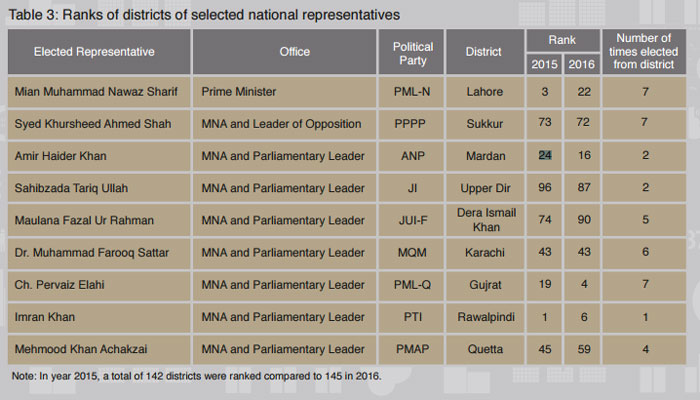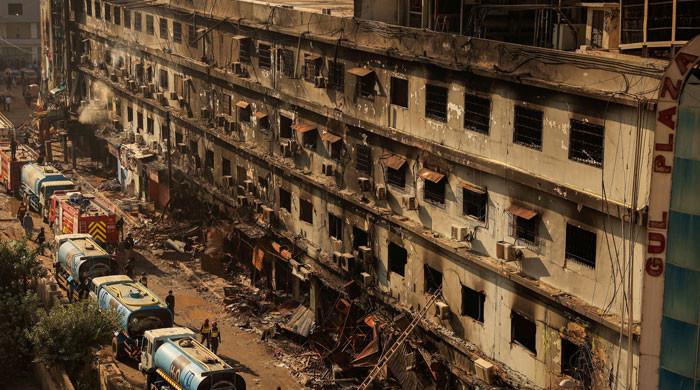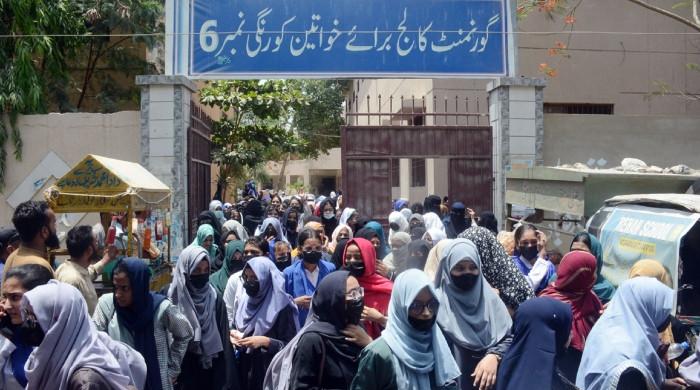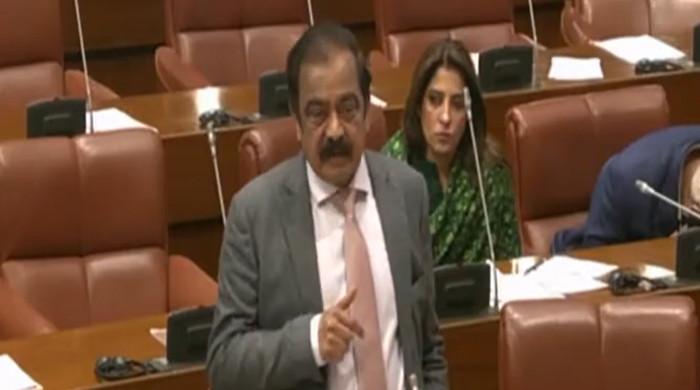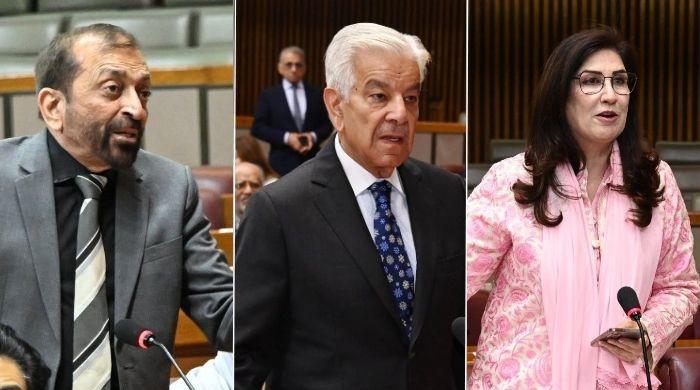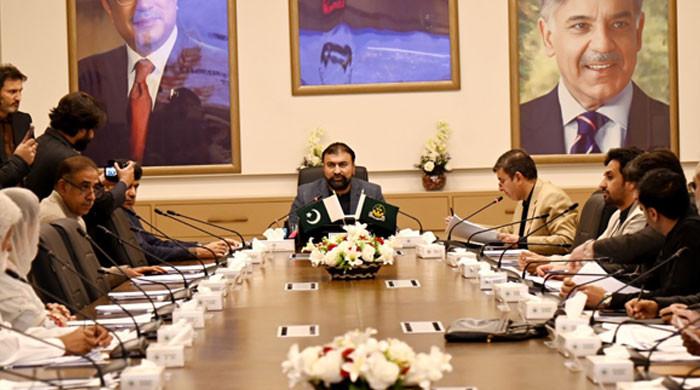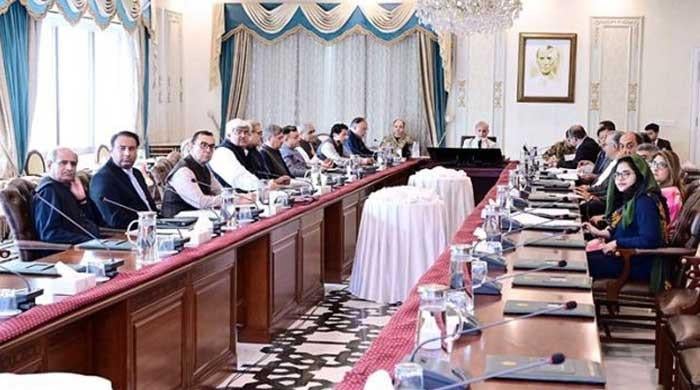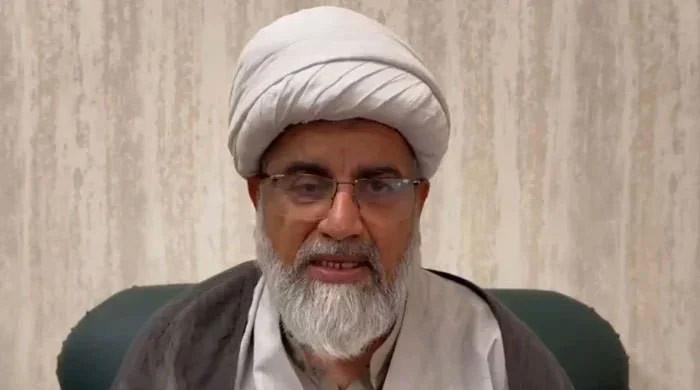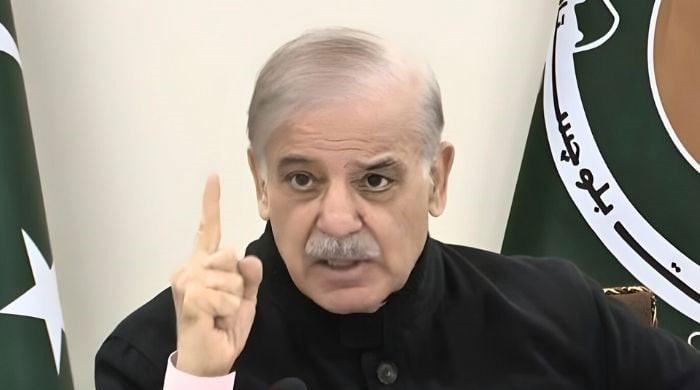High school distant dream for most primary schoolchildren in Pakistan
Eighty one percent of all public schools in Pakistan are primary schools
May 26, 2016
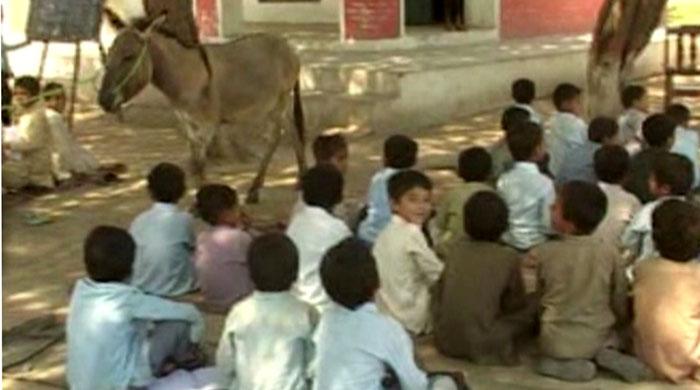
A child who completes primary education from a public school in Pakistan may never make it to high school. Eighty one percent of all public schools in Pakistan are primary schools.
A new study on the state of schools in Pakistan released by Alif Ailaan and Sustainable Development Policy Institute claims that only 52 percent of all government schools in the country have all four facilities—toilets, boundary walls, electricity and drinking water).
The report titled Pakistan District Education Ranking now in its fourth year covers all 151 districts across the country to assess their education scores, based on levels of enrolment, retention, learning, gender parity and school facilities.
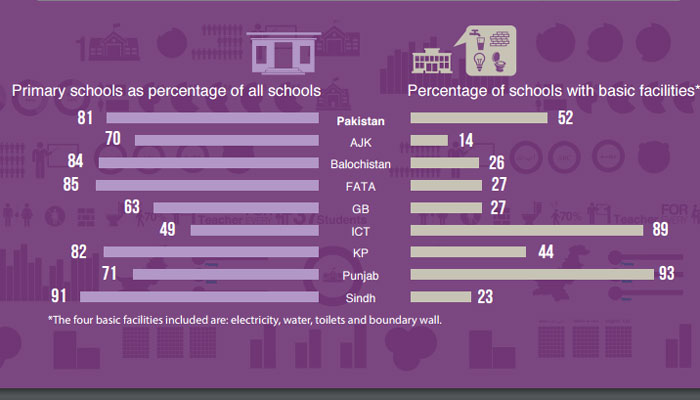
The district rankings reflect that Islamabad, Punjab, Azad Jammu and Kashmir (AJK) and Khyber Pakhtunkhwa (KP) all have relatively better scores on the education and infrastructure indices. However, FATA, Balochistan and Sindh are consistently poor performers, relative to the rest of the country.
Though some districts have demonstrated remarkable improvements, there is little to indicate any major nationwide improvement in either education quality or the quality of school infrastructure. Some of the drops in the overall scores may also be explained by a more rigorous and robust data collection process across the country, especially Khyber Pakhtunkhwa, Sindh and Balochistan.
The Federal Capital is atop both the provincial/regional rankings, as well as the district rankings for the first time with increased learning and enrolment scores.
Likewise, although Punjab’s education score decreased due to a decline in the retention score, it scored highest in gender parity. It is important to note that last year the education score of the province suffered a drop in learning outcomes. However the provincial government responded to this by re-focusing on the quality of education. Consequently, this year Punjab demonstrates a slight improvement in the learning outcomes score. Punjab also continues to provide a superior school infrastructure to its students, where 93% of the schools have all four basic facilities.
While KP demonstrated improvements in both enrolment and gender parity scores, the retention rate of the province declined, consequently affecting the overall education score. On the other hand, the province is ranked higher at third in school infrastructure score, which indicates significant improvement. However 50% of its schools still lack the provision of all four basic facilities.
Balochistan and Sindh continue to suffer the lowest education and infrastructure scores. Balochistan’s education score has dropped, moving Balochistan to the last rank. Except for Quetta (which is amongst the top 50), almost half of the districts of Balochistan rank outside the top 100.
Sindh has the lowest learning outcomes this year. Moreover, only the six of its districts are in the top half of the rankings table. Once again, Karachi is the only district in the top 50. The state of school infrastructure also continues to suffer, where only 23% schools could be considered complete, having all four basic facilities.
Azad Jammu Kashmir (AJK) has experienced the largest improvement amongst provinces/regions with a substantial increase in its education score. However the infrastructure score remains critical, with only 13% of the schools providing all basic facilities to children (electricity, drinking water, toilet facility and boundary wall).
Although GB’s progress has been stagnant over the past four years, given the numerous challenges, the region still managed to show relative improvements with increased education score of 3%. Six out of seven districts of GB continue to stay in the top half of the rankings. However the infrastructure score remains deplorable, with 50% of the schools failing to provide basic facilities to students.
The Federally Administered Tribal Areas (FATA) demonstrate improvement in their education score by 3%, enabling FATA to outrank Baluchistan. Interestingly FR Kohat, which was unranked in previous years (due to non-availability of data), has managed to get the 39thposition. For the first time, FATA managed to break into the top 50, with a remarkable education score in FR Kohat at 72.77.
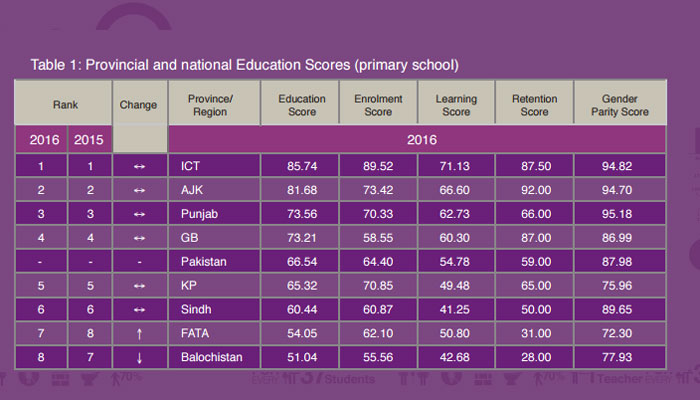
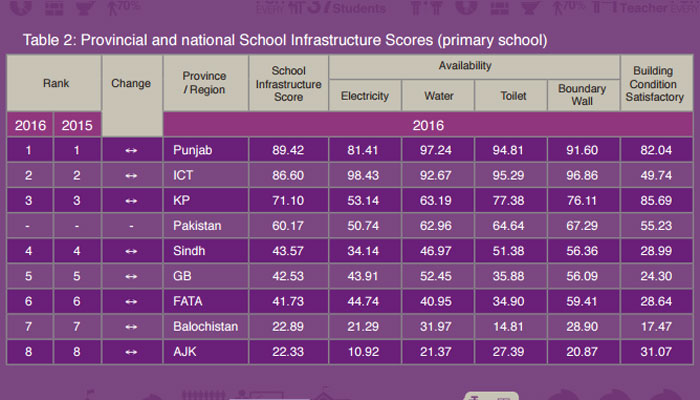
The report also analysed how well constituencies of popular politicians did when it came to education. Lahore, which is Prime Minister Nawaz Sharif's constituency slipped down to from 3 to 22 in the year 2016. Awami National Party leader Amir Haider Khan's constituency Mardan moved up to number 16 in 2016 from 24 last year. Pakistan Tehreek-e-Insaf leader's Rawalpindi constituency was number 1 in 2015 but it went down to number 6 this year.
